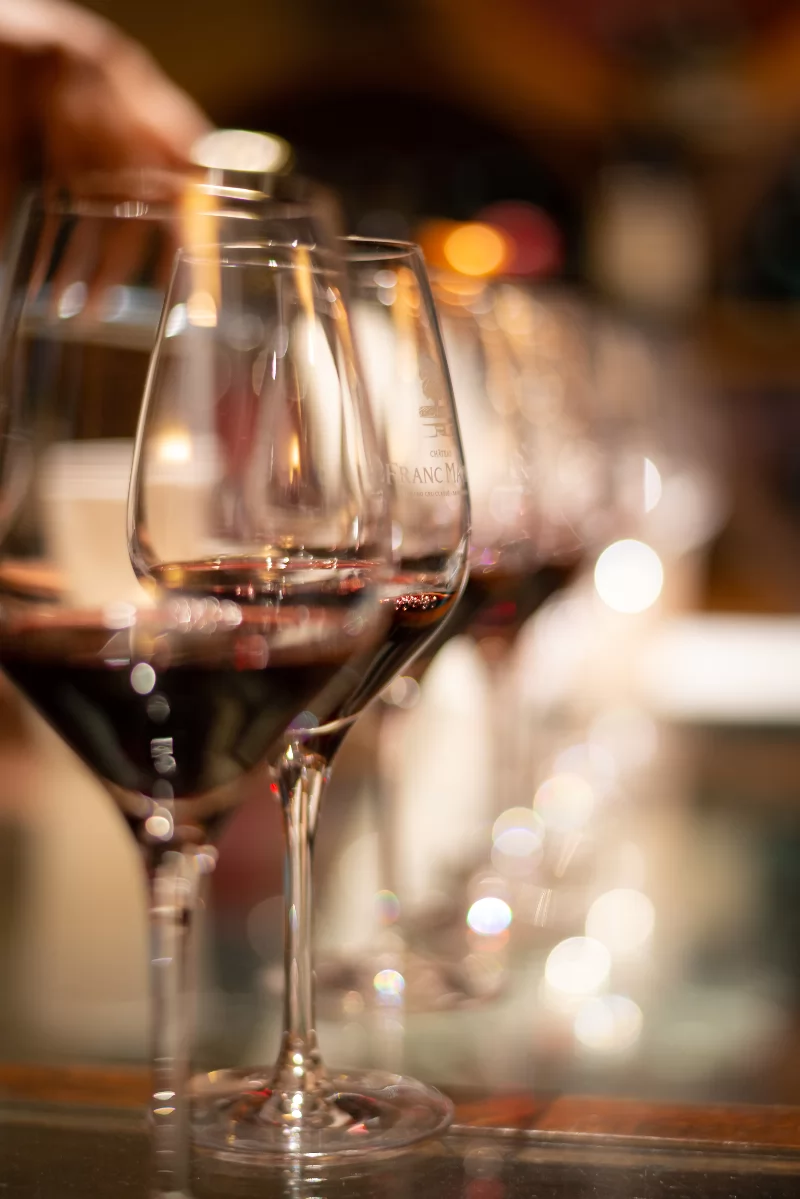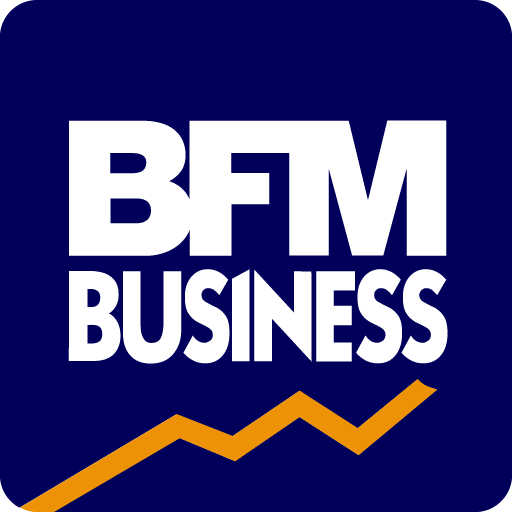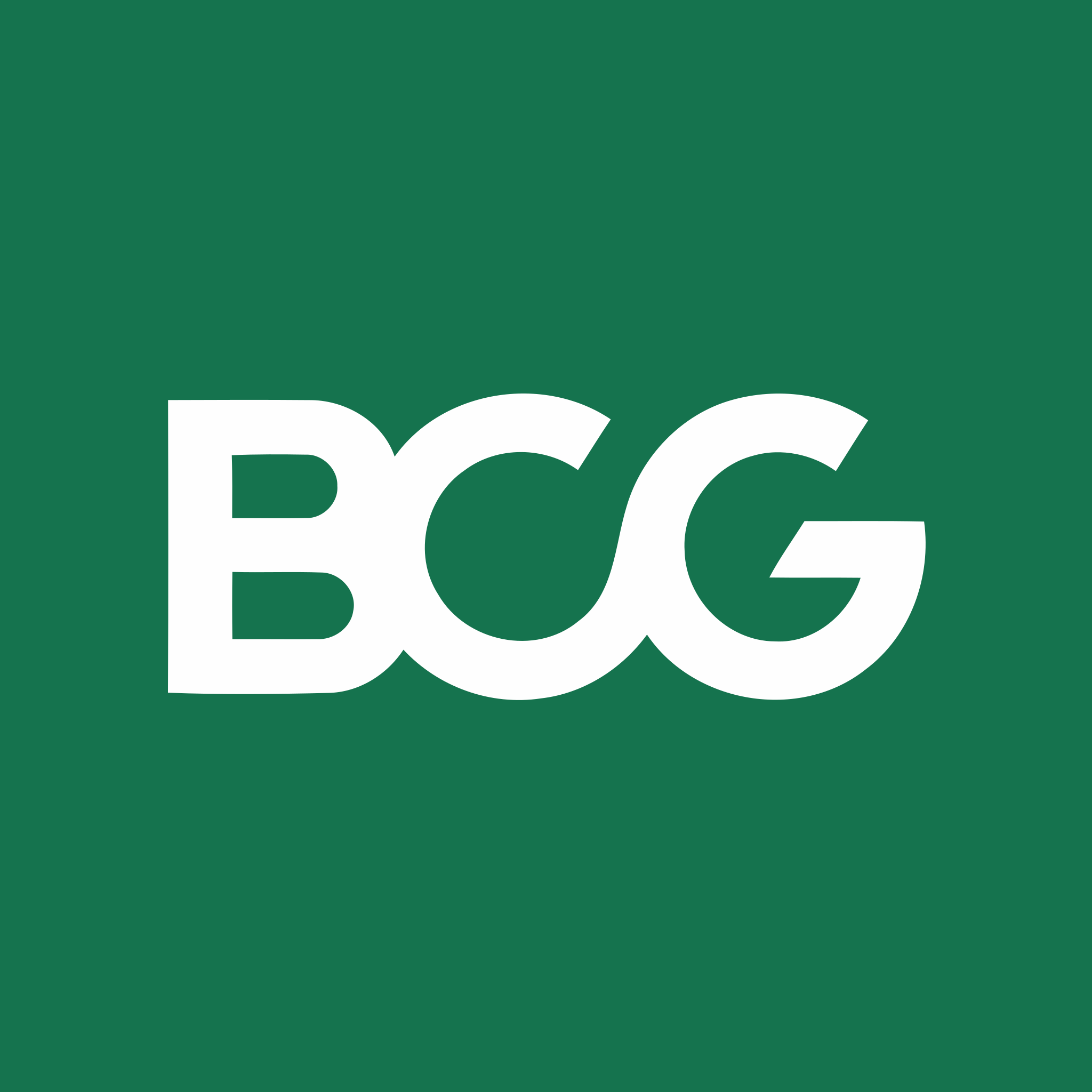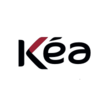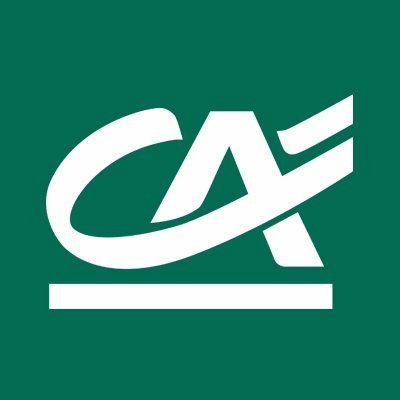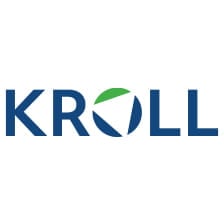Detailed content of our market study
 Inforamtion
Inforamtion
- Number of pages : 35 pages
- Format : Digital and PDF versions
- Last update :
 Summary and extracts
Summary and extracts
1 Market Overview
1.1 Definition and scope of the study
Wine bars represent one of the most elegant and refined expressions of contemporary wine culture, offering a unique experience for both novices and experts in the field. These venues, which specialize in the sale and tasting of wines, are distinguished by their ability to combine wine excellence with a welcoming and informative atmosphere. Customers can explore wide selections of wines, often accompanied by high-quality food products that enhance their flavors and characteristics. The growing popularity of wine bars reflects a broader interest in wine and its culture, fitting into a changing market environment.
By 2022, the global value of the wine market is estimated at $441.5 billion, signaling a robust and growing industry. Forecasts for 2023-2030 indicate a compound annual growth rate(CAGR) of 5.90 percent, suggesting that the global wine market could reach nearly $700 billion by 2030. This growth testifies to the growing global demand and the importance of the wine sector in the world economy.
Globally, the period between 2015 and 2022 saw a reduction in the total amount of wine produced, with a 6.8 percent decline from 277.1 million hectoliters to 258.3 million hectoliters. Despite this, Italy maintains its lead as the leading wine producer, contributing 19.3 percent of world production in 2022 and surpassing France and Spain. The three countries together account for more than half of the world's wine production, highlighting their central role in the global wine industry.
In Italy, wine production is characterized by remarkable diversity and quality, the result of a wide range of grape varieties and winemaking techniques. The country is renowned for the production of red and white wines, both still and sparkling, each with unique characteristics related to the terroir and methodologies adopted. This enological richness contributes to Italy's reputation as a world leader in the wine industry.
Increasing climatic instability poses a significant challenge to the sector, causing wide fluctuations in annual production. However, this variability also underscores the importance of innovation and adaptability in the wine industry. Wine bars, as an integral part of this ecosystem, play a crucial role in promoting knowledge and appreciation of quality wines, offering consumers the opportunity to discover the diversity and richness of Italy's and the world's wine heritage.
1.2 Global market analysis
A global wine market value of $***.* billion is estimated for ****. A modest compound annual growth rate(***) of *.** percent is forecast for ****-****. The global wine market is projected to be close to $*** billion in ****.
Wine Market World, ****-****, in billions of dollars Vantagemarket*.research
Regarding wine production, globally between **** and **** there is evidence of a reduction in the total amount produced. During the period analyzed, total production fell from ***.* million hectoliters to ***.* million hectoliters, marking a contraction of *.* percent. Wine production World, ****, million hectoliters OIV Italy is the world's leading wine producer. In **** the country contributed **.*% of world wine production, ahead of France (***). Wine production, breakdown by country World, ****, % OIV Finally, analyzing world wine consumption, the United States ranks first with **.* percent of total consumption; followed by France and Italy with **.* percent and *.* percent of total consumption, respectively. Wine consumption, breakdown by country World, ****, % OIV
1.3 The Italian market
Between **** and **** we see a tendentially unchanged wine production of **.* million hectoliters. However, analyzing individual vintages shows an increase between **** and **** of *.* percent, a subsequent decline between **** and ****(***). Increasing climate instability presents important consequences for the sector, leading to wide fluctuations in production between years.
Wine production Italy, ****-****, in millions of hectoliters OIV
Analyzing the value of wine production sold in the period between **** and ****, a marked growth is observed. In these years, the value increased from *.** billion euros to **.** billion euros, registering an increase of **.* percent. Significantly, the significant increase(***) between **** and **** can be attributed, in part, to the effects of inflation following the outbreak of the conflict between Russia and Ukraine.
Value of wine production sold Italy, ****-****, in billion euros Istat Red and rosé wines with controlled designation of origin(***) make up **.* percent of the total value of production sold. They are followed by sparkling wines, which account for **.* percent of the total, and DOC or DOCG white wines, which occupy **.* percent. The remaining categories include non-DOC/DOCG red and rosé wines, other types of white wines and grape musts, which hold **.* percent,**.* percent and *.* percent of the total value of production sold, respectively. Production sold of ...
1.4 Import and Export Analysis
To visualize foreign market trends, consider HS Code **** "Wines of fresh grapes, including fortified wines."
Italy can be defined as a net exporter of wine. Between **** and ****, the export coverage ratio, determined by the ratio of exports to imports multiplied by ***, is always above ****%, fluctuating between ****.*% and ****.*%. Specifically, during the period analyzed, the value of exports increased from $*.** billion to $*.** billion, marking a growth of**.*%, while the value of imports increased from $*** million to $*** million, representing a growth of **.*%.
Wine import - export Italy, ****-****, in billion euros and % Uncomtrade
Examining Italian trade flows in detail, it emerges that the United States is confirmed as Italy's main trading partner. In ****, **.* percent of total Italian exports are headed to the United States, followed by Germany (***). Together, these four countries absorb more than half of Italy's export volume, reaching **.* percent of the total. The other countries, taken individually, do not exceed the threshold of *.* percent of total exports, underscoring the concentration of destination markets for Italian products. Main destination countries for wine exports Italy, ****, % Uncomtrade As for imports, the trade flow is significantly more concentrated around a few players. In ****, **.* percent of the value of Italian imports is collected solely from France. This ...
1.5 Impact of the conflict between Russia and Ukraine
The outbreak of the Russian-Ukrainian conflict in February **** had major repercussions on the Italian economic system. The sector related to the production and sale of wine is not exempt from the effects brought about by the outbreak of the conflict. Between January **** and December ****, the consumer price index for the purchase of wine rose by * points, representing a * percent increase in selling prices. Compared with ****, the price increase stands at *.* percent.
Consumer price index for the purchase of wine Italy, ****-****, base ****=*** Istat
The increase in consumer prices is nothing but a reflection of the increase in production costs. Between January **** and November ****, the producer price index for wines shows an increase of *.* points, representing a *.* percent increase in production costs over ** months. Compared to ****, producer prices increased by **.* percent. Producer price index for wines Italy, ****-****, base ****=*** Istat
2 Demand analysis
2.1 Overview of demand
The period from **** to **** shows an increase in wine consumption in Italy; total consumption increased from **.* million hectoliters to **.* million hectoliters, representing a growth of *.* percent.
Wine consumption Italy, ****-****, in millions of hectoliters OIV
Between **** and ****, there was also an increase in the number of regular wine consumers in Italy. Over these eight years, the Italian population claiming to consume wine regularly increased from **.* million to **.* million, an increase of *.* percent. This growth, however, was most pronounced in the two-year period ****-****, registering +*.* percent, while in the period between **** and ****, the numbers remained virtually unchanged, indicating a stabilization of the consumption trend. Wine Consumers Italy, ****-****, in millions Istat
2.2 Substitute consumption at the Wine-bar
Wine itself is not only a good-tasting alcoholic product, but it is also a symbol for consumers to accompany moments in their lives and social interaction. To understand what direct competitors to consider for the Wine Bar market, we must first start with the wine product and what its substitute products are, and then with the occasion and place of enjoyment, which may lead to consumption of the same product in different places or different products in different places[***].
Wine Substitute Products:
Beer: Beer is a very popular product in Italy and much appreciated both during some meals and as a gathering occasion. it has been estimated that today, beer appreciative consumers in Italy are quantitatively comparable to those of wine, thanks to the efforts made in both habits and refinement by Italian producers of product quality and processes[***]. Cocktails: Although the pricing is higher on average and so is the target audience, very often one is faced with the choice between the two products on a specific drinking occasion. The increase in cocktail consumption, indicates that this is a more easily enjoyed product, taking away from that occasion of going into a winebar and consuming wine[***]. Coffee: On average, Italians ...
2.3 Demand drivers
For the analysis of the drivers of wine demand in Italy, the distribution of consumers in different age groups and by professional status are considered.
Regarding the distribution of consumers in different age groups, those over ** gather the highest share of consumers, accounting for **.* percent of the national total. They are followed by those aged **-**, accounting for **.* percent of the total, and young people aged **-**, with **.* percent of the total. Finally, the **-** age group gathers **.* percent of consumers while baby boomers(***) are **.* percent of the total consumers.
Wine consumers, breakdown by age group Italy, ****, % Istat
Regarding consumers' employment status, retirees make up **.* percent of the entire consumer base. This is followed by executives , middle managers and office workers, who account for **.* percent, and blue-collar workers with **.* percent of the total. Business executives and entrepreneurs, together with the unemployed, make up *.* percent and *.* percent of the total consumer base, respectively. Students make up a smaller share at *.* percent. Finally, those in other working conditions account for **.* percent of the total.
Wine consumers, breakdown by employment status Italy, ****, % Istat
As for the wine and food tourism segment, Italy is one of the favorite destinations for tourists from all over the ...
2.4 Distribution of demand
In order to analyze the geographic distribution of wine demand in Italy, two maps were drawn up that illustrate, respectively, the distribution of wine consumers and the average monthly expenditure per household in the different Italian macro-regions.
The map regarding the distribution of wine consumers shows that the Northwest stands out as having the highest percentage, accounting for **.* percent of the national total. The other macroregions, namely the Northeast, the Center and the South, exhibit fairly homogeneous values, with percentages of **.* percent, **.* percent and **.* percent, respectively. The Islands, on the other hand, host a smaller share of total wine consumers in Italy, with only*.* percent.
Regarding the monthly expenditure of Italian households on wine purchases, the Northwest is confirmed as the region with the highest average expenditure, amounting to **.** euros per month. The Northeast and the Center follow with an average monthly expenditure of **.** euros and **.** euros, respectively. In the South, the average expenditure per family decreases to *.** euros per month, while in the Islands the figure decreases further to *.** euros per family.
2.5 Decisive figures in the industry
[***]
2.6 New demand trends
Consumer interest in alcohol-free and low-alcohol wines is growing, reflecting a shift in drinking habits and preferences. This trend is driven in part by increased health awareness, environmental concerns, and demand for fresher, lighter styles of beverages. Consumers, especially younger generations, are showing a growing interest in healthier and more responsible beverage options. However, creating alcohol-free and low-alcohol wines that maintain the sensory qualities of traditional wines is a challenge for producers, as the lack of alcohol greatly affects taste and texture.[***]
In ****, the value of the global alcohol-free wine market is estimated at $*.** billion. Between **** and ****, this market segment is expected to grow sharply, with a compound annual growth rate(***) of **.** percent, which could bring the global alcohol-free wine market close to a total value of $*.** billion.
Alcohol-free wine market World, ****-****, in billions of dollars ***Marketupdates
3 Market structure
3.1 Market structure and dynamics
To visualize the size of the market under analysis, we consider Ateco Code **.**.**, comprising: catering with food service - activities of establishments of restaurants, fast-food outlets, delicatessens, fry shops, pizzerias, etc., which have seats - activities of establishments of breweries, pubs, wine bars and other similar establishments with a kitchen. From **** to **** there is an increase in activity of *.* percent in the sector.
Active enterprises (***) Italy, ****-****, in thousands Istat
Analyzing the legal form of active enterprises under the Ateco Code taken into analysis, it can be seen that the prevalence is composed of Individual Entrepreneurs, freelancers and self-employed workers(***); followed by Limited Liability Companies, which make up **.* percent of active enterprises in the sector.
Legal form active enterprises (***) Italy, ****, % Istat As for the number of employees in the sector, an increase of *.* percent is noted from **** to ****. The highest value of the analyzed years occurs in ****, and compared to this, a significant decrease of *.*% occurs in ****.
Number of employees of active enterprises (***) Italy, ****-****, in thousands Istat
3.2 Value Chain
The value chain and operation of the wine market and production and distribution in Italy are summarized below. As the Wine-Bar is among the distribution outlet of this larger market, their specific value chain is given below:
3.3 Wine production
When it comes to grape production, between **** and **** the area under vines present in Italy increased from ***,*** hec tares to ***,*** hectares, representing a growth of *.* percent. The growth appears to be constant during the entire period, with the exception of only ****(***).
Area planted with vines Italy, ****-****, in thousands of hectares Istat
The area planted with organic vines is also growing. Between **** and ****, the total area under organic cultivation grew by **.* percent, from ***,*** to ***,*** hectares. While in **** the organic planted area was ** percent of the total planted area, in **** this represents **.* percent of the total.
Area planted with organic vines Italy, ****-****, in thousands of hectares Wineshop
Finally, analyzing the types of grapes grown, in **** ** percent of the area planted with vines is for the production of PDO wines. This is followed by grapes for PGI wines with **.* percent, while grapes for wines other than PDO and PGI collect **.* percent of the total area planted with vines. Area planted with vines, breakdown by type of wine Italy, ****, % Istat
3.4 Main actors
In Italy, a land of ancient wine traditions, wine bars are popular meeting places for locals and tourists alike to discover and taste quality wines. Here are some of the country's most famous wine bars, each with its own distinctive characteristics:
4 Supply analysis
4.1 Overview of the Offering
In Italy, wine production is distinguished by its diversity and quality, with a wide range of types that vary in color, body, taste, and production methodology.Each grape variety gives the wine unique characteristics, both in terms of aroma and taste, which are further influenced by the specific terroir and winemaking techniques adopted in each region.The two major categories of Italian wine are red wines and white wines, which in turn are divided into still and sparkling wines.
Red wines
Still red wines: these wines are known for their full body, intense flavors and long persistence. They are typically more tannic and have flavors ranging from fruity to spicy. They are ideal with rich, flavorful foods such as red meats, game and aged cheeses. Some of the most widely used grape varieties include: Sangiovese: used for wines such as Chianti and Brunello di Montalcino. Nebbiolo: grape variety for Barolo and Barbaresco. Barbera: commonly used in Piedmont to produce Barbera wines. Montepulciano: main grape variety for Montepulciano d'Abruzzo. Aglianico: used in southern Italy, especially for Taurasi and Aglianico del Vulture.
Sparkling red wines: these wines have a carbon dioxide content that makes them slightly effervescent. They are generally lighter and more ...
4.2 Prices
To analyze price trends related to wine consumption in Italy, consumer price indexes over the period ****-**** are analyzed for * different product types.
Table wines
Between **** and ****, the price index for table wine consumption shows an increase of *.* points, equal to average price increase of*.*%. Specifically, it shows a *% increase between September **** and September ****, while between September **** and September **** the price index shows a *% decrease . However, the outbreak of conflict in February **** resulted in an *.*% increase in prices over the next ** months.
Consumer price index for table wines Italy, ****-****, base ****=*** Istat Quality wines.
The price index for quality wines shows the smallest increase among the * different product types. In fact, between **** and ****, prices increased by an average of just*.*%. While between January **** and January **** the index shows an increase of *%, between January **** and January **** this drops by *.* points. Finally, the outbreak of the conflict in February **** also led to an increase in prices: between January **** and September ****, prices rose by an average of *.*%, while between September **** and December **** the indica goes back down again(***).
Consumer price index for quality wines. Italy, ****-****, base ****=*** Istat Sparkling wines Among the different product types analyzed, sparkling wines show the largest increase in the ...
4.3 Online wine shops
Online buying particularly involves the wine industry. Consumers are happily embracing the idea of buying wine through online wine stores, and responses from wine retailers are growing steadily. In this context, however, consumer habits do not simply reflect the traditional shopping experience; in fact, in an increasingly competitive environment, it is far from easy for the online wine store to win its share of the public and, more importantly, nurture it. Price, crucial for the majority of users, is not the only driver of purchase. One of the most flourishing examples of the online wine shop is that of My Wine Store, which in just a few years has positioned itself among the best wine e-commerce.
There are several characteristics that drive consumers to shop online:
Preferences related to the type of wine: the possibility of exploring labels from around the world is one of the main attractors. This does not detract from the possibility for stores to focus on one wine category; a retailer particularly strong on bubbly will be able to offer this as a differentiator while at the same time emphasizing variety in the catalog. Information and reviews: access to detailed product information is a key element for ...
5 Regulations
5.1 Rules and regulations
The following is the essential regulatory overview for the wine bar industry:
Business licenses and authorizations: Legislative Decree **/****: regulates the activities of serving food and beverages and the sale of alcohol.
Sale of alcohol: Law ***/****: measure to prevent and combat excessive and harmful consumption of alcohol (***). Article *** of the Penal Code: prohibits the sale of alcohol to persons under ** years of age.
Food safety and hygiene: Regulation (***) No. ***/****: on food hygiene, requires the adoption of procedures based on HACCP principles. Regulation (***) No. ***/****: Establishes specific rules on the hygiene of food of animal origin.
Taxation and fiscal obligations: Presidential Decree ***/****: Introduces VAT and regulates taxable transactions, exemptions and deductions. Law No. *** of December **, ****: obligations regarding the use of cash systems and the issuance of receipts or tax receipts.
6 Positioning of players
6.1 Segmentation
- Signorvino
- Enoteca Pinchiorri
- Cantina della Vetra
- Ai Tre Scalini
- Le Volpi e l'Uva
All our studies are available online in PDF format
Take a look at an example of our research on another market!
 Choosing this study means :
Choosing this study means :
Access to more than 35 hours of work
Our studies are the result of over 35 hours of research and analysis. Using our studies allows you to devote more time and added value to your projects.
Benefit from 6 years' experience and over 1,500 industry reports already produced
Our expertise enables us to produce comprehensive studies in all sectors, including niche and emerging markets.
Our know-how and methodology enable us to produce reports that offer unique value for money.
Access to several thousand articles and paid-for data
Businesscoot has access to all the paid economic press as well as exclusive databases to carry out its market research (over 30,000 articles and private sources).
To enhance our research, our analysts also use web indicators (semrush, trends, etc.) to identify market trends and company strategies. (Consult our paying sources)
Guaranteed support after your purchase
A team dedicated to after-sales service, to guarantee you a high level of satisfaction. +44 238 097 0676
A digital format designed for our users
Not only do you have access to a PDF, but also to a digital version designed for our customers. This version gives you access to sources, data in Excel format and graphics. The content of the study can therefore be easily retrieved and adapted for your specific needs.
 Our offers :
Our offers :
the wine bar market | Italy
- What are the figures on the size and growth of the market?
- What is driving the growth of the market and its evolution?
- What is the positioning of companies in the value chain?
- Data from several dozen databases
5 reports pack (-15%) IT Italy
- 5 reports at €75.6 excluding VAT per study to choose from our Italian catalogue for 12 months
- Save 15% on additional studies purchased
- Choose to be refunded any unused credit at the end of the 12-month period (duration of the pack)
See the terms and conditions of the pack and the refund of unused credit.
